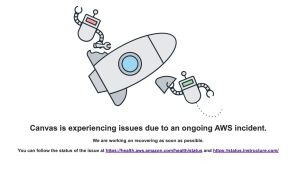Power lifting club tackles gender inequality in sports
In the sports industry, gender still influences ratings and treatment
April 12, 2017
Under the direction of strength and conditioning coach Jim Davis, Power lifting Club has been muscling toward gender equality in sports.
The club has written many letters to local and national news and sports networks asking for more coverage of women’s sports in televised media.
Although forty percent of professional athletes are female, women make up less than 4% of media coverage, according to researchers at the University of Southern California.
Senior Zach Shonfeld said that in the letters, “We introduced ourselves to make [the letters] more personal, then we requested that they talk more about and cover gender inequality in sports.”
Davis, who held a seminar on gender inequity in sports for International Women’s Day, believes that this inequality begins after the high school and collegiate levels.
Once players leave school, sports and athletics are, “no longer an educational platform, [they are] a business,” he said.
Under law, men and women must have equal opportunities for government-funded sports programs, which include those in high school and college.
Title IX of the Education Amendments Act of 1972 states, “No person in the United States shall, on the basis of sex, be excluded from participation in, be denied the benefits of, or be subjected to discrimination under any education program or activity receiving Federal financial assistance.”
However, these rules only apply to the pre-professional levels. Once sports become businesses, the companies themselves decide the pay and opportunities available for their athletes.
Davis and his club found that “NBA players make about 50% of the overall income [total money earned by the team], while WNBA [players] make about 33% of the overall.”
This difference in pay can be attributed to the difference in media coverage received, causing a cycle of inequality.
Some people believe that male sports are covered more by the media because more men watch sports. Davis explained that these tendencies for more men to watch sports are created by social norms that associate masculinity with sports.
“We fall back on excuses like that to explain why the divide [between the coverage of men and women] is enlarging, when really we should be aimed at closing it,” he said.
From the years 1989 to 2014, media coverage of women athletes by Sportscenter has gone down from 3.2% to 2%, according to a study done by Michael Messner and Michela Musto of USC and Cheryl Cooky of Purdue University.
If coverage of women’s sports increased, Davis believes that more women would watch televised sports. This would lead to higher pay for the athletes and a smaller income gap between genders.
Research done at Adelphi University indicates that women only earn 1.5% of the money that their male counterparts earn in basketball.
The average NBA player’s salary is $4.5 million a year, while the average WNBA player’s annual salary is $72,000.
Some people may argue that men receive more coverage because they are inherently better at sports. People who think this way have “a limited view of what an athlete is,” Davis explained.
When one incorporates teamwork, tactical understanding, strategy, and sportsmanship in addition to physical ability, “then there’s no differentiation.”
Sophomore Lexie Kaplan, a member of Girl Up and a cross country runner, agreed with Davis.
“We need to turn this perception around so people realize that women actually do fit the mold of an athlete and are just as talented as men are,” she said.
Although professional-level sports have not reached gender equality yet, there have been numerous efforts to close the gap in the past few years. For example, 70% of sports tournaments now offer the same prize money for men and women.
Power lifting club is doing its part to promote gender equality in sports. “We had a lot of different people write them [the letters] to show how passionate we are about the idea. It was a really cool opportunity,” Shonfield said.
Davis said of the letter-writing campaign, “Who knows if it will move the needle or not, but we will continue writing.”










































